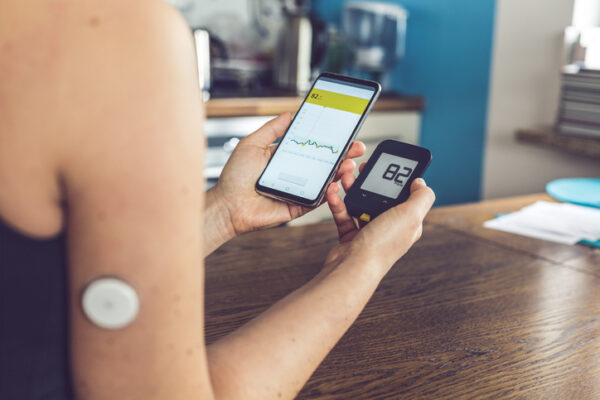
Technology innovation shows no sign of slowing as the healthcare industry continues on its quest to improve the quality, efficiency, and accessibility of care. The past few years have seen an array of new connected devices and systems, including wearables that continuously monitor vitals to surgical robots to smart bandages that use sensors to track and aid healing. This is driving the medical device market towards a valuation of USD 94.2 billion by 2026 as the sector strives to provide more personalized care, improve outcomes, and deliver operational efficiencies.
These technologies aim to accelerate the shift toward more preventive healthcare and to ease systemic staffing shortages. However, to realize these goals, every product must perform reliably across all potential situations, and this requires overcoming some key challenges, including:
- Security

How AI and Machine Learning Can Transform Pharmacy Benefits Management
Abarca executives see plenty of potential for new technologies but note the need to strike the right balance between tech and human intervention.
The healthcare industry is a perennial cybercriminal target. Connected medical devices, remote employees, concerns about exfiltration, and the risk of ransomware attacks contribute to the escalating problem. The most recent Verizon Data Breach Investigations Report found the sector experienced 1,220 breaches in 2023, and patients’ personal information was compromised in 75% of incidents. In this heightened environment, it’s imperative that security is prioritized throughout the life cycle of new connected devices and systems to protect patient information. Steps including encryption, secure data transmission, and removal of default passwords can strengthen defenses. In addition to improving security, this also helps meet the industry’s growing regulatory burden, including HIPAA and the HITECH Act, which mandate that patients’ personal information is protected.
To help address concerns, the FDA introduced cybersecurity guidance for medical devices in 2023. Additionally, the recently announced CISA’s “secure-by-design” pledge is part of the government’s commitment to more oversight to ensure that security is a priority throughout the development process. Fostering trust between all parties and adhering to privacy and security standards are critical to advancing digital health.
- Performance
As healthcare becomes increasingly digital and technology helps inform and drive patient care, risk reduction becomes increasingly critical. When an e-commerce site is slow, or the checkout fails, it is frustrating for shoppers. However, if an insulin pump encounters a problem, it could have life-altering consequences. Therefore, every innovation must be thoroughly tested before it’s integrated to ensure it performs reliably. This involves evaluating signal and power integrity along with software quality. With the complex web of devices, this is far from an easy task. In addition, once deployed, organizations must continuously monitor the technology to address any flaws or issues resulting from an update before a patient is impacted.

Integrated Enrollment Platforms and Consumer Assistance Centers: The Strongest Advantage for State-Based Exchanges
In the ever-evolving landscape of state-based health insurance exchanges, the convergence of technology and customer service is reshaping how these exchanges operate. The increasing advent of automation and artificial intelligence (AI) is rapidly dismantling the traditional business model that relies on the siloing of technology and customer service centers.
- Interoperability
As connected healthcare continues to advance, data is stored in multiple systems and devices. Physicians and nurses need to obtain a comprehensive view of patient data across the network, irrespective of where it originated. This requires technical, semantic, and organizational interoperability. There are vast volumes of data to harness, and seamlessly sharing this information with all stakeholders is vital in the pursuit of improving care and outcomes.
The entire system must be tested, from devices to electronic health records to laboratory processes, to ensure everything works seamlessly. This will reduce medical errors, improve diagnostics and patient care, and increase operational efficiency. Overcoming the interoperability hurdles requires adopting APIs, AI, and blockchain technologies, standardizing data, and fostering collaboration among stakeholders.
Digital healthcare
As technology continues to advance, it has huge potential to improve patient care and outcomes, ease staff workloads, and deliver operational efficiencies. With diagnosis, treatment, and care increasingly involving various digital technologies, reducing risk is vital. Healthcare organizations must ensure that every solution incorporated into the connected ecosystem is designed and tested to validate that it is secure, compliant, and performs as expected. Only then will the promise of personalized and preventative care become possible.
Photo: dzika_mrowka, Getty Images
Marie Hattar has more than 20 years of leadership experience spanning the security, routing, switching, telecom and mobility markets. Before Keysight Technologies, Marie was CMO at Ixia and at Check Point Software Technologies. Prior to that, she was Vice President at Cisco where she led the company’s enterprise networking and security portfolio and helped drive the company’s leadership in networking. Marie also worked at Nortel Networks, Alteon WebSystems, and Shasta Networks in senior marketing and CTO positions. Marie received a master’s degree in Business Administration in Marketing from York University and a Bachelor’s degree in Electrical Engineering from the University of Toronto.
This post appears through the MedCity Influencers program. Anyone can publish their perspective on business and innovation in healthcare on MedCity News through MedCity Influencers. Click here to find out how.













